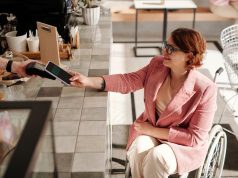Art is a universal language that transcends borders, cultures, and backgrounds. It has the power to inspire, provoke, and challenge us in ways that words cannot. However, for many people, accessing art can be a challenge. Whether it’s due to physical disabilities, financial constraints, or geographical limitations, not everyone has the opportunity to experience the beauty and wonder of art in person. That’s why accessible galleries and exhibitions are so important. They provide a platform for everyone to engage with art, regardless of their circumstances. In this article, we’ll explore the world of accessible galleries and exhibitions and the impact they have on the art world and beyond.
1. Breaking Barriers: Making Art Accessible to Everyone
Art is a universal language that has the power to transcend boundaries and bring people together. Unfortunately, not everyone has equal access to the world of art. Breaking barriers and making art accessible to everyone is crucial in ensuring that everyone can experience the beauty and power of art.
One way to make art more accessible is by providing free or low-cost art programs in schools and community centers. These programs can include classes in painting, drawing, sculpture, and other forms of art. Additionally, museums and galleries can offer free admission days or discounted tickets to make their exhibits more accessible to those who may not have the financial means to visit regularly.
- Another way to break barriers in the art world is by featuring more diverse artists and artwork. This includes artists from different backgrounds, cultures, and perspectives. By showcasing a variety of art, more people can see themselves represented in the art world and feel included.
- Finally, technology can also play a role in making art more accessible. Virtual tours of museums and galleries can allow people to experience art from anywhere in the world. Additionally, digital art programs and apps can provide a platform for people to create and share their own art.
Breaking barriers and making art accessible to everyone is not only important for the individual, but for society as a whole. Art has the power to inspire, educate, and bring people together. By ensuring that everyone has equal access to the world of art, we can create a more inclusive and vibrant society.
2. From Inclusion to Empowerment: The Rise of Accessible Galleries
Accessibility has become a major concern for galleries and museums around the world. The rise of accessible galleries has been a natural progression from the inclusion movement of the past few decades. The goal of these galleries is to provide an environment that is welcoming and accessible to all visitors, regardless of their physical or cognitive abilities.
One of the key features of accessible galleries is the use of technology to enhance the visitor experience. This includes audio descriptions, tactile exhibits, and interactive displays. In addition, many galleries have implemented universal design principles in their physical spaces, such as ramps, wide doorways, and accessible seating. These changes not only benefit visitors with disabilities but also create a more inclusive environment for everyone. As the demand for accessible galleries continues to grow, it is clear that the focus is shifting from mere inclusion to true empowerment. By providing equal access to art and culture, these galleries are empowering visitors to engage with the world around them in new and meaningful ways.
3. Art for All: How Exhibitions are Redefining Accessibility
Exhibitions are no longer just for the elite. Art institutions are taking steps to make exhibitions more accessible to everyone. From tactile exhibits to audio guides, museums are redefining what it means to be inclusive.
One way museums are making art more accessible is through tactile exhibits. These exhibits allow visitors to touch and feel the artwork, providing a unique experience for those with visual impairments. Additionally, audio guides are becoming more common in exhibitions, providing a way for visitors to learn about the artwork without relying on visual cues. Museums are also offering sign language tours and descriptive audio tours for visitors with hearing impairments. By providing these options, museums are ensuring that everyone can enjoy and learn from the exhibits.
In conclusion, art institutions are making great strides in redefining accessibility. By offering tactile exhibits, audio guides, and sign language tours, museums are ensuring that everyone can enjoy and learn from the exhibits. These efforts are not only making art more accessible, but they are also promoting inclusivity and diversity in the art world. In conclusion, art is a universal language that should be accessible to everyone. With the rise of accessible galleries and exhibitions, more people are able to experience the transformative power of art. It is important for us to continue to push for inclusivity in the art world and to create spaces that welcome all individuals, regardless of their abilities. By doing so, we can ensure that art truly becomes for all.






























